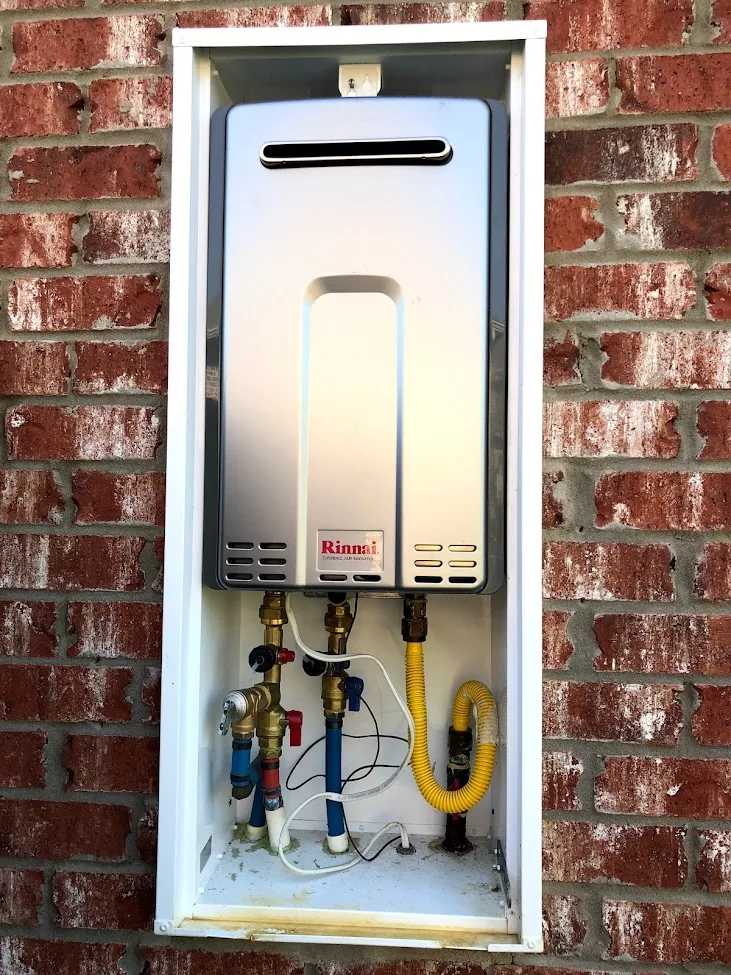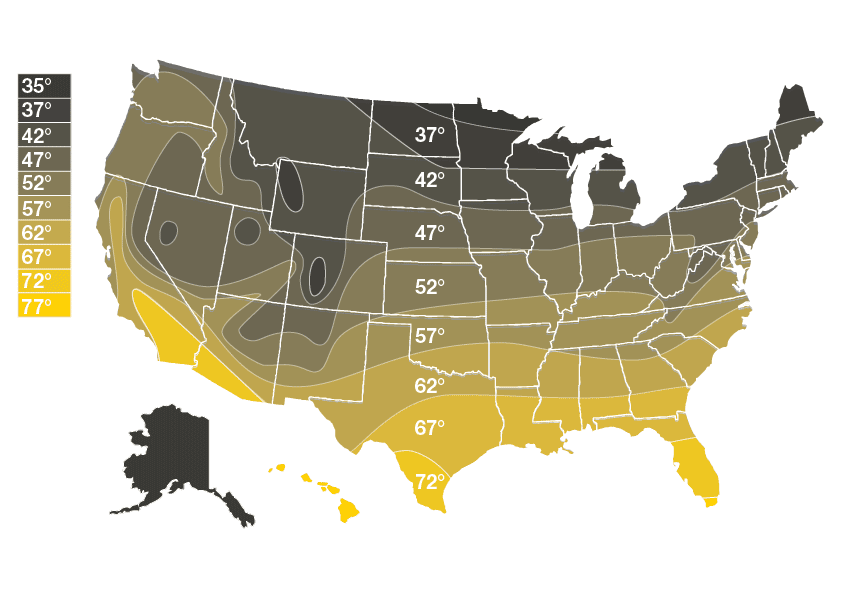Estimated reading time: 5 minutes

Sizing a tankless water heater involves determining the hot water demand for your home and selecting a unit that can deliver the necessary hot water flow rate.
Whether buying a home with a tankless heater already installed or converting your tank-style heater, there are a few factors to consider.
The hot water demand will depend on the number of fixtures in your home. Each fixture is called a “point of use.” You’ll need to identify and count the total number.
The necessary flow rate of the tankless will be affected by how much water is needed for a particular fixture. A small wet bar sink won’t use the same volume of water as a shower.
Here are some considerations.
DEMAND
Determine your hot water demand: Start by calculating your home’s total hot water usage by adding up the flow rates of all fixtures and appliances that require hot water. Each fixture will demand a certain number of gallons per minute.
FLOW RATE
Calculate the required flow rate for each fixture. Determine how many points of use will be running at the same time. The more hot water you ask the heater to produce, the larger the tankless unit you’ll be required to install.
If you call for water in the shower, the washing machine, and the dishwasher simultaneously, you may overload the tankless water heater’s ability to provide hot water.
Here is a chart of the average hot water flow rate for various fixtures in a typical home.
| Fixture | Flow Rate (gallons per minute) | Number of Fixtures | Total Gallons |
|---|---|---|---|
| Shower | 3 | 1 | 3 |
| Kitchen sink | 2 | 1 | 2 |
| Bathtub | 4 | 3 | 12 |
| Dishwasher | 1.5 | 1 | 1.5 |
| Laundry | 2.5 | 1 | 2.5 |
| Vanity Sink | 2.5 | 4 | 10 |
As you can see from the chart above, if you run the washing machine, a dishwasher, a shower, and two vanity sink simultaneously, you need a water heater that provides close to 12 gallons per minute. That’s a large tankless.
If you’re purchasing an average 3 bedroom/2 bath home and the heater is rated for 5 gallons per minute, “now” is the best time to discuss the facts. Know your limits. Your usage matters. If your tankless isn’t sized for how you use hot water, your water heater won’t keep up with the demand.
Here are a few other factors that will affect a tankless water heater.
Water Temperature

Tank-style and tankless-style water heaters are preset at the factory to deliver hot water at 120º. How cold is your incoming water? It matters.
Let’s say the water from your tap is 60ºF. You’ll most likely want to heat it to 120º.
Consider your climate: If you live in a cold climate, your incoming water will be colder. You may need a tankless water heater with a higher flow rate or install multiple units to handle the demand.
PIPE LENGTH

Once the water is heated, how far away are your points of use? The location of the tankless water heater will significantly affect its efficacy. Centrally locating the tankless unit between points of use will reduce pipe lengths and deliver hot water more efficiently. In a retrofit, the unit can be wall mounted near the location of the original tank-type water heater to save costs, or the installer can move it to a more efficient central location, which would likely increase installation costs. Additional plumbing lines may need to be installed if the unit is relocated. You may need to increase the size of the tankless with a higher flow rate to handle the distance.
ELECTRIC RECEPTACLE
That’s right, if you are converting a tank-style heater to a tankless, you’ll be required to plug it into a receptacle—plan to have an outlet nearby. Based on the brand and/or the install location, the receptacle may need to be GFCI protected. A 15 Amp 110v outlet will handle most tankless water heaters unless you install a fully electric model. In that case, you’ll most likely need a 30Amp 220v receptacle. Look for the specifics as you consider the model and make.
VENT REQUIREMENTS
Again, if converting a gas tank model to a tankless, you may also be required to change the size and the type of the heater’s exhaust vent. Based on the brand, the vent may be required to be larger and made of PVC, stainless steel, and a few other configurations based on the model and make. As always, when working with gas fuel, hire a professional with a gas license who has been trained to install the appliance and has the experience that fits your needs.
WATER QUALITY
Water quality matters. Tankless heaters are sensitive. The heat exchanger has tiny ports that require water to flow without restrictions. That means scale build-up can impede water flow.
When you combine restricted water flow, long pipe runs, lack of pipe insulation, and local climate, you’ll want to consider all your options before you buy.
- - - - - - - - - - - - - - - - - - - - -